Hey there, stress-busters! In today’s fast-paced world, stress has become an unwelcome companion. From the daily grind to the constant buzzing of our phones, stress can creep in and take over. But fret not because a yoga pose is here to rescue you from the clutches of stress! Get ready to dive into the calming world of Downward Dog and discover why it’s the ultimate stress-busting yoga pose you need in your life.
Why Stress Management Matters
Before we roll out our yoga mats and dive into the heart of the matter, let’s take a moment to understand why stress management is so crucial. Stress can wreak havoc on your physical and mental health, leading to various issues such as anxiety, insomnia, and even chronic diseases. But fear not because yoga offers a holistic approach to managing stress.
The Role of Yoga in Stress Reduction
Yoga has been practiced for centuries and for a good reason. It’s not just about twisting your body into pretzel-like shapes; it’s a powerful tool for calming the mind and soothing the soul. Yoga combines physical postures, breathing exercises, and meditation to create a comprehensive stress management solution. Amongst these postures, Downward Dog stands tall as a champion stress-buster.
The Anatomy of Downward Dog
Downward Dog Yoga PoseStep-by-Step Guide to the Pose

Let’s begin with the fundamentals. Downward Dog, known as Adho Mukha Svanasana, is a foundational yoga position that resembles an inverted “V” shape. To assume this pose, follow these straightforward steps:
Understanding the Body Alignment

Proper alignment is the key to reaping the full benefits of Downward Dog and avoiding unnecessary strain. Here’s what you should be mindful of:
Common Mistakes to Avoid
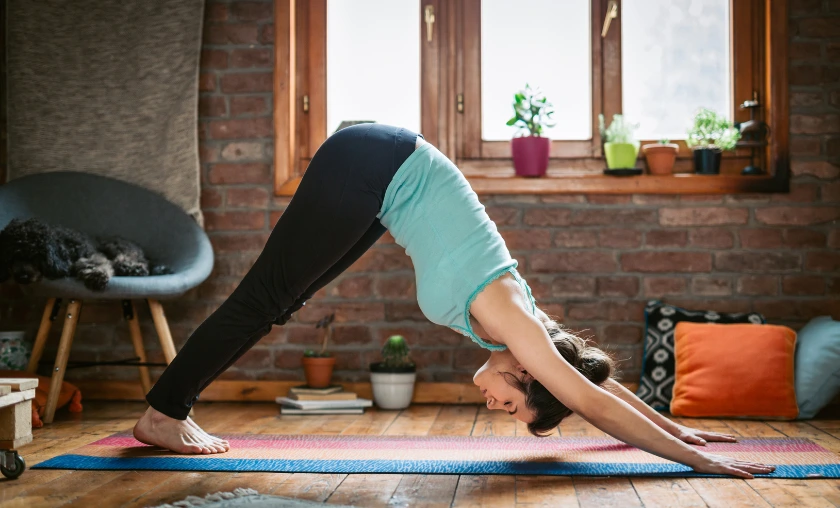
Even the most experienced yogis can make mistakes when practicing Downward Dog. Here are some common pitfalls to steer clear of:
Now that we’ve covered the basics let’s dive deeper into why Downward Dog is the go-to pose for busting stress.
The Science Behind Stress Reduction
Downward Dog Yoga PoseHow can a simple yoga pose help reduce stress? Well, there’s science behind it! Let’s explore why Downward Dog is a stress-reducing powerhouse.
How Downward Dog Affects the Nervous System
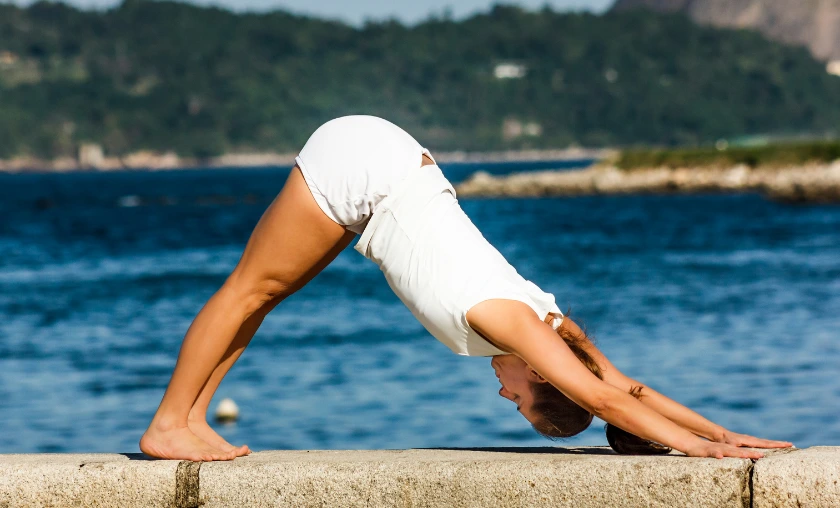
Downward Dog is a part of the category of yoga poses known as inversions. When you go upside down, even in a mild way like in Downward Dog, you stimulate your parasympathetic nervous system, which is responsible for the “rest and digest” response. This helps counteract the “fight or flight” response triggered by stress.
Release of Stress Hormones
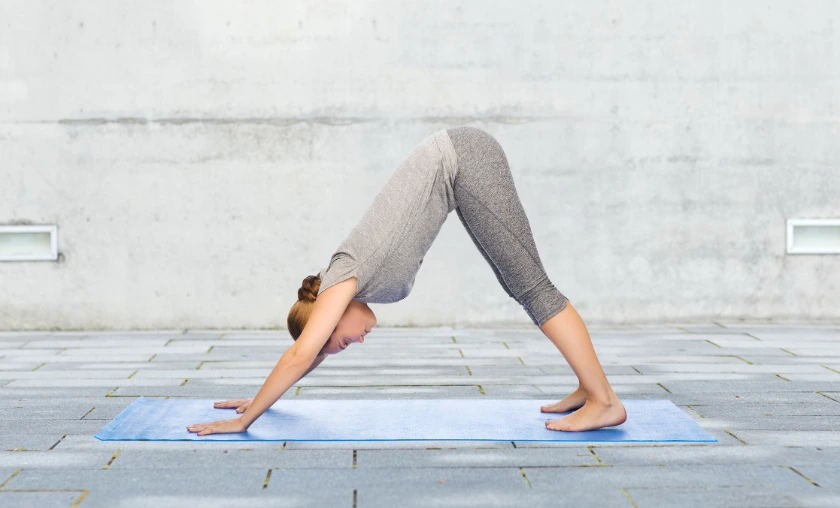
As you hold Downward Dog, you’re stretching your muscles and releasing tension and stress. The deep breaths you take in this pose help reduce the levels of stress hormones like cortisol in your body. So, Downward Dog doesn’t just feel good; it’s actively reducing stress at the hormonal level.
Mind-Body Connection
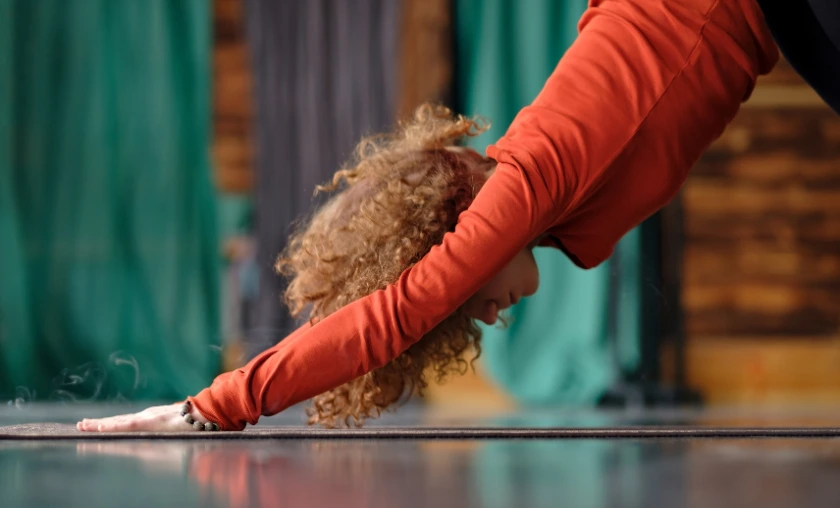
One of the magical aspects of yoga is its emphasis on the mind-body connection. Downward Dog encourages you to focus on your breath and body alignment, effectively shifting your attention away from stressors in your life. This meditative aspect of the pose can help calm racing thoughts and anxiety.
Benefits Beyond Stress Relief
Downward Dog Yoga PoseWhile stress relief is the show’s star, Downward Dog offers many additional benefits that make it a must-try yoga pose. Here’s what else you’ll gain:
Strength and Flexibility

Downward Dog is a full-body workout. It strengthens your arms, shoulders, back, and legs, all while improving flexibility in these areas. Over time, you’ll notice increased muscle tone and better overall body strength.
Improved Posture
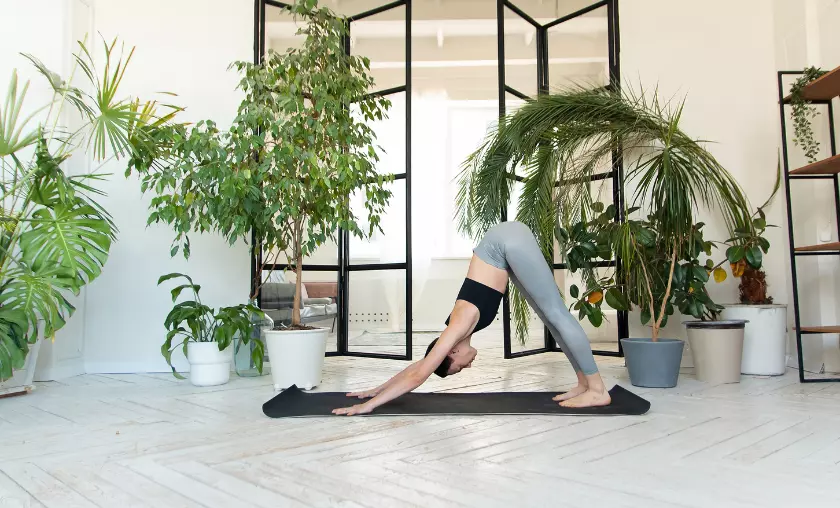
Regular practice of Downward Dog can work wonders for your posture. Stretching and lengthening the spine helps you stand tall and sit straight, reducing the risk of chronic back pain.
Boosting Energy Levels
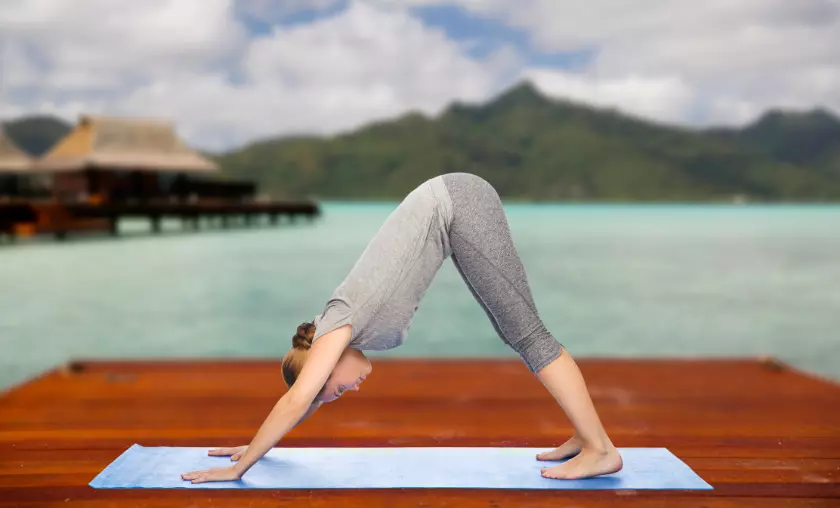
If you’re feeling sluggish and fatigued, Downward Dog can provide a solution! This pose enhances blood circulation to the brain, elevating your energy levels and leaving you invigorated and revitalized.
Preparing for Your Downward Dog Practice
Downward Dog Yoga PoseBefore you roll out your yoga mat and embark on your stress-busting journey with Downward Dog, ensure you’re well-prepared.
Setting the Right Environment
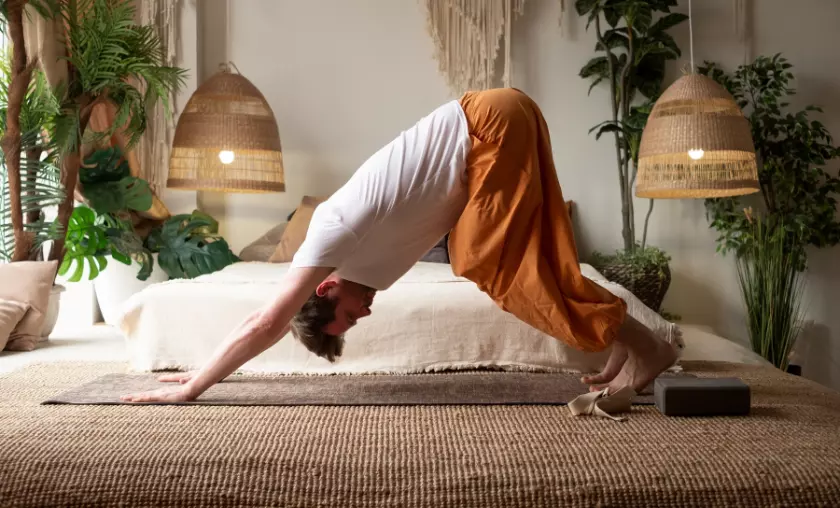
Creating the perfect yoga space can enhance your practice. Find a quiet, clutter-free area where you won’t be disturbed. Dim the lights, play soothing music, and light a few candles or incense if that helps you relax.
Necessary Equipment

All you need for a Downward Dog session is a yoga mat. However, if you have wrist issues, use yoga blocks to support your hands.
Warm-up Exercises
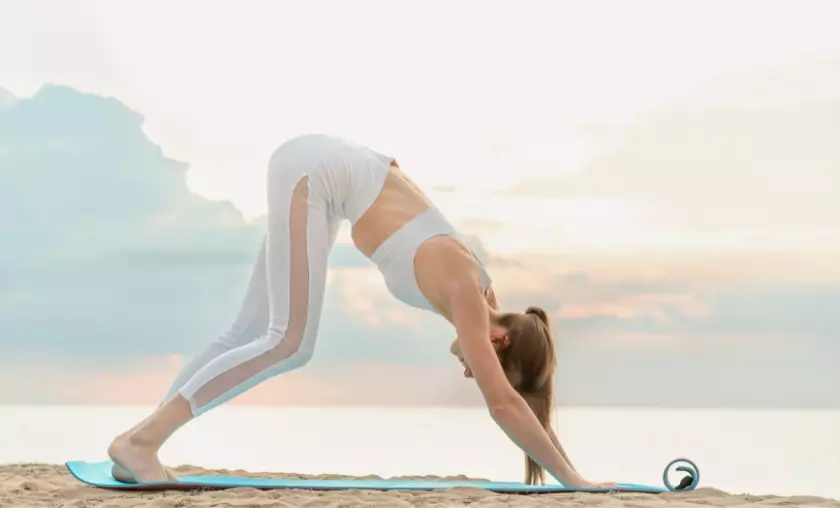
Before jumping into Downward Dog, warm up your body with some gentle stretches. Focus on your wrists, shoulders, hamstrings, and calves to prepare them for the pose.
You can start practicing Downward Dog with your environment set, equipment in place, and body warmed up. The following section will guide you through the pose, including breathing techniques and modifications for all levels.
Practicing Downward Dog
Downward Dog Yoga PoseNow, let’s get down to the nitty-gritty of practicing Downward Dog. We’ll cover breathing techniques, how to hold the pose effectively and provide modifications for all skill levels.
Breathing Techniques
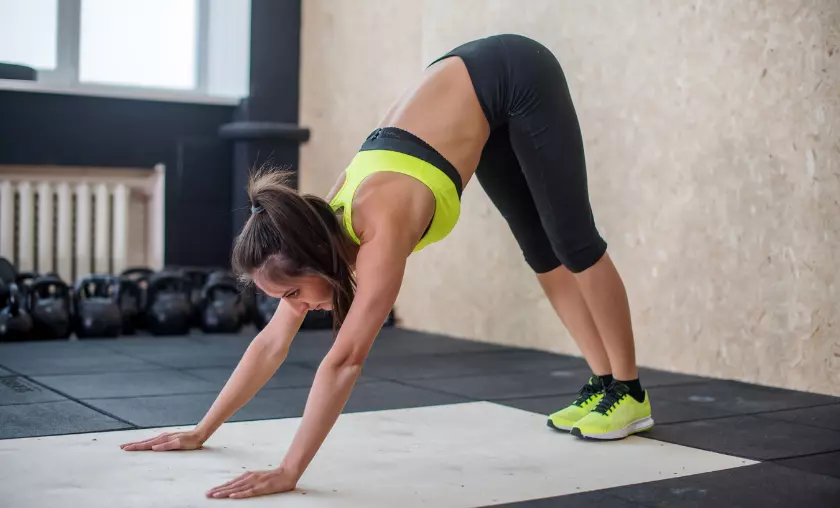
Breath is the life force of yoga, and it plays a crucial role in Downward Dog. Follow these breathing techniques for a more calming and effective practice:
Holding the Pose
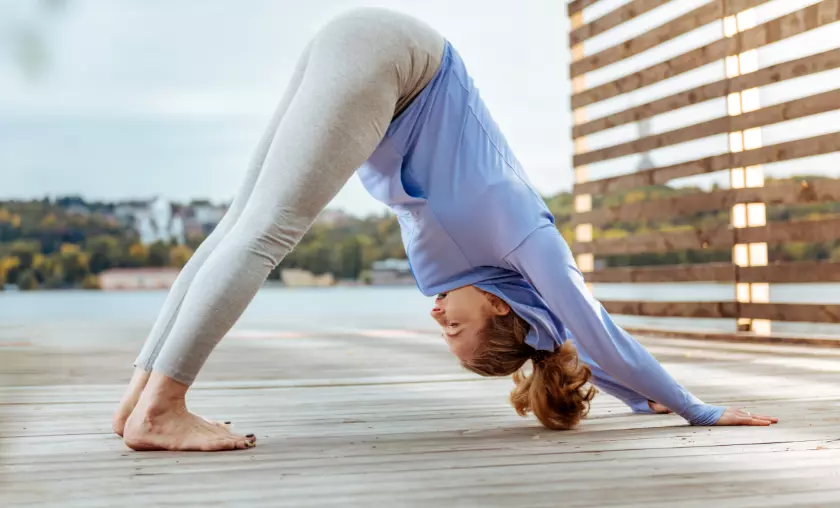
When you’re in Downward Dog, it’s essential to maintain the pose correctly to experience its full benefits. Here’s a breakdown of how to hold it effectively:
Modifications for All Levels
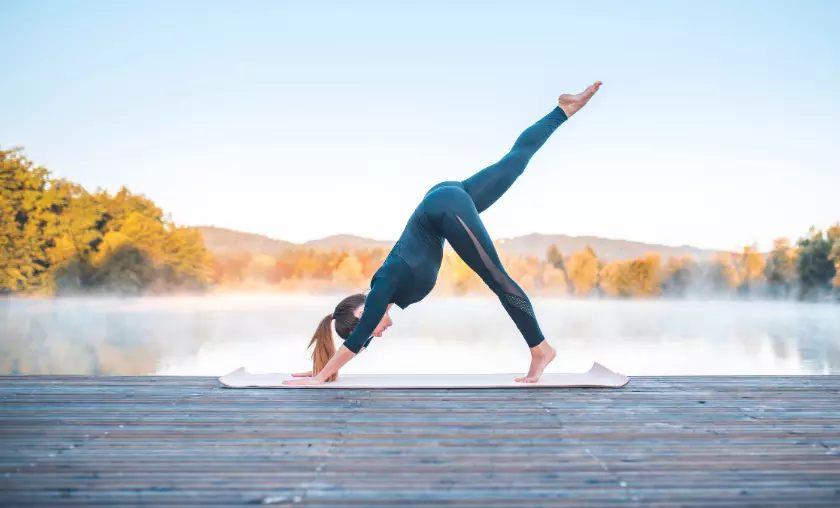
One of the great things about Downward Dog is its adaptability. Whether you’re a beginner or a seasoned yogi, there are modifications to suit your level of flexibility and comfort:
Always keep in mind that yoga is a journey, not a final destination. The essential aspect is to maintain a consistent practice and attentively heed your body as it gains flexibility and strength.
Incorporating Downward Dog into Your Daily Routine
Downward Dog Yoga PoseNow that you have the basics, it’s time to integrate Downward Dog into your daily routine. Here’s how you can make it a consistent part of your life:
Creating a Yoga Schedule

Consistency is the secret sauce of any successful yoga practice. Establish a yoga schedule that works for you daily, every other day, or a few times a week. Please write it down in your calendar, set reminders, and commit to sticking with it.
Combining with Other Stress-Relief Techniques

While Downward Dog is a powerful stress-busting tool, it’s even more effective when combined with other stress-relief techniques. Consider incorporating meditation, deep breathing exercises, or mindfulness practices to enhance stress management.
Tracking Your Progress
Keep a yoga journal to track your progress. Note how you feel before and after each session, any improvements in flexibility or strength, and your overall stress levels. This can be a motivating way to see how Downward Dog positively impacts your life.
Testimonials & Success Stories
Downward Dog Yoga PoseDon’t just take our word for it – let’s hear from real people who have experienced the stress-reducing magic of Downward Dog. Their stories might inspire you to roll out your yoga mat today!
Real-Life Experiences with Downward Dog
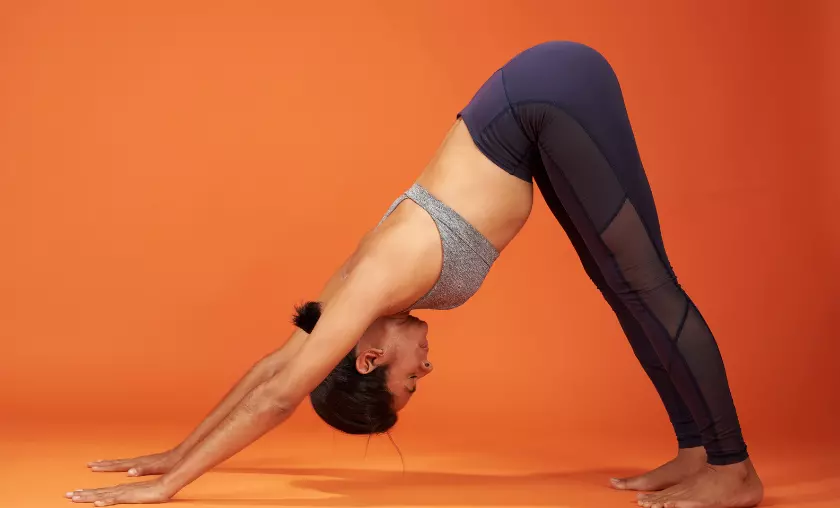
Sarah, 34, Marketing Manager: “As someone who often finds herself stressed out at work, Downward Dog has been a game-changer. It helps me reset my mind and stay focused throughout the day.”
David, 42, Teacher: “I’ve struggled with back pain for years, and Downward Dog has been a lifesaver. It’s improved my posture and reduced my discomfort significantly.”
How Others Have Managed Stress

Emily, 29, Graphic Designer: “I used to suffer from insomnia due to stress. I’VE BEEN SLEEPING LIKE A BABY since I started practicing Downward Dog before bedtime.”
Alex, 37, IT Specialist: “I’ve tried various stress management techniques, but Downward Dog is the only one that consistently works for me. It’s my daily escape from the chaos of life.”
Tips for Overcoming Challenges
Downward Dog Yoga PoseLike any worthwhile endeavor, there will be challenges along the way. Here are some tips to help you overcome them:
Dealing with Physical Limitations
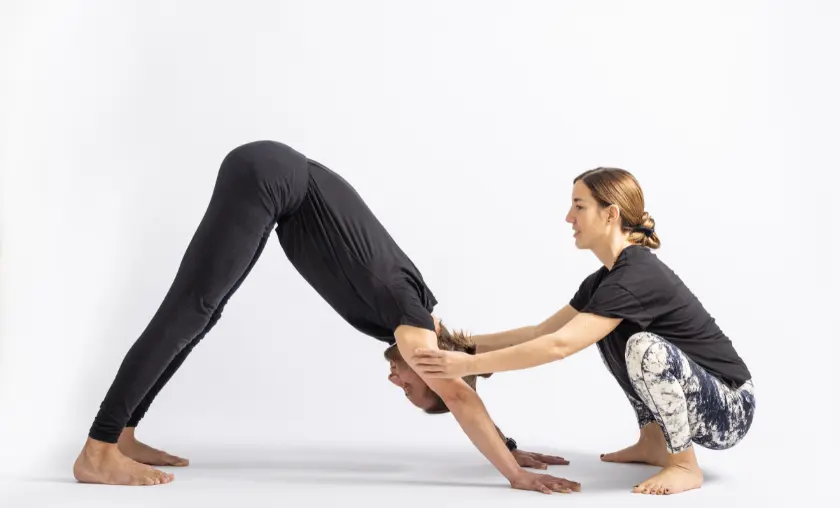
If you have physical limitations like injuries or health conditions, it is vital to seek advice from a healthcare professional before commencing a yoga practice. They can provide guidance on appropriate modifications or alternative poses to ensure your safety.
Mental Blocks and Patience

Yoga is as much about the mind as it is about the body. If you face mental blocks or impatience with your progress, remember that yoga is a journey, not a race. Be kind to yourself and stay patient; improvements will come with time.
Staying Consistent
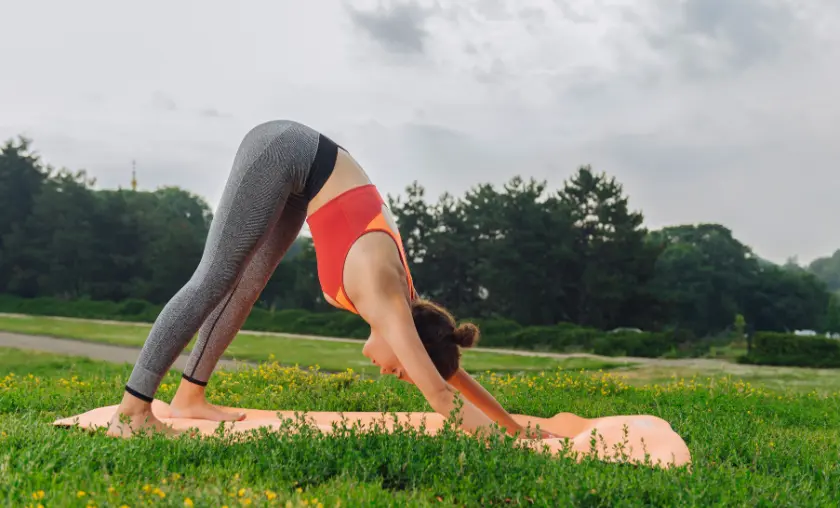
Maintaining consistency is crucial for experiencing the advantages of Downward Dog. Keep your motivation high, establish attainable objectives, and consider having an accountability partner, whether it’s a friend, family member, or an online yoga community.
Conclusion
Congratulations, stress-busters; you’ve just embarked on a journey towards a more stress-free and healthy life with Downward Dog! We’ve explored why stress management is crucial, how yoga is vital in reducing stress, and the science behind how Downward Dog works its magic.
Remember, the benefits of this pose go beyond stress relief. It strengthens your body, improves your posture, and boosts your energy levels. Plus, you’ve learned how to prepare for your practice, do Downward Dog with proper alignment, and customize it to your skill level.
Incorporating Downward Dog into your daily routine can be a life-changer. Create a yoga schedule, combine it with other stress-relief techniques, and track your progress. And remember to draw inspiration from real-life success stories.
As you face physical or mental challenges, use our tips to stay on track. Stay patient, stay consistent, and most importantly, enjoy the journey. Downward Dog is not just a pose; it’s a path to a calmer, healthier, and happier you. So, roll out your yoga mat, take a deep breath, and let the stress melt away. Namaste! 🧘♀️🧘♂️
FAQs
What are the main benefits of practicing Downward Dog in my yoga routine?
Well, each type of Yoga has its unique focus and approach. Hatha Yoga is all about balance and harmony through postures and breath control. Vinyasa Yoga emphasizes flowing movements synchronized with Breath for a dynamic experience. Ashtanga Yoga follows a structured sequence for strength and discipline.
On the other hand, Iyengar Yoga focuses on precise alignment and uses props for support. Yin Yoga targets connective tissues with longer-held, passive poses. Kundalini Yoga combines dynamic movements, breathwork, and meditation for spiritual growth.
Prenatal Yoga caters to expectant mothers, offering modified postures and relaxation techniques. Power Yoga is intense, blending yoga and fitness elements for strength and endurance. Lastly, Restorative Yoga brings deep relaxation and healing through passive poses and stress reduction.
I’m a beginner in yoga. Can I still attempt Downward Dog, or is it too advanced?
For beginners, Hatha Yoga and Iyengar Yoga are excellent choices. Hatha offers a solid foundation in basic postures and breath control, providing a gentle introduction to Yoga. Iyengar Yoga’s emphasis on alignment and the use of props ensures a safe and supportive environment for beginners to build strength and flexibility. Both styles provide a slow-paced and mindful approach that’s perfect for newcomers.
How long should I hold the Downward Dog pose to experience its stress-reducing benefits?
To enhance your flexibility, Yin Yoga and Vinyasa Yoga are great options. Yin Yoga’s long-held poses gently stretch connective tissues and improve joint mobility. Vinyasa Yoga’s flowing sequences encourage dynamic stretching, helping to increase flexibility as you move through various poses.
Are there any common mistakes I should know when practicing Downward Dog?
Yoga is a fantastic tool for managing stress and anxiety. Yin Yoga, Restorative Yoga, and Kundalini Yoga are particularly effective. Yin and Restorative Yoga encourage relaxation through passive poses and deep breathing, calming the nervous system. Kundalini Yoga’s focus on breathwork, meditation, and mantras helps alleviate stress and promote inner peace.
I often struggle with wrist pain. Is there a way to mitigate this discomfort while doing Downward Dog?
I’ve had similar wrist issues, and using yoga blocks or modifying the pose with bent knees can help reduce the pressure on your wrists. You can also experiment with different hand positions to find what feels most comfortable for you.
To read more similar articles, click here
Thanks for visiting our Website. If you appreciate our work, kindly show us some support in our comments section 🙂



